With all the history surrounding Sandy Hook and the former Fort Hancock, it’s also fascinating to look back on some of the more humorous or fun pieces of nostalgia connected with the peninsula along the Atlantic Ocean.
Certainly, the very popular Sandlass Beach Club, the Bamboo Room and the social life there, and even how Dock Street at Highland Beach got named are all stories that add charm and intrigue to the cold hard facts of history.
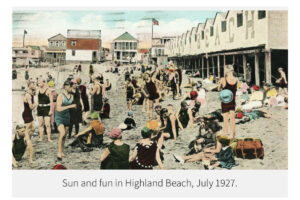
Local historian Susan Sandlass Gardiner has captured many of these stories in her book and in research for future books. One story involves some details from the late Edna Robinson Black, later a Highlands resident and wife of Duke, one of the Brothers Black of Conners Hotel fame.
Edna and her German grandfather, Louis Lusson and her mother, Wilma Robinson, annually leased the renovated ice house on the Sandlass tract at the entrance to Sandy Hook. In meeting with Edna a year before she died, Susan captured some of her charm and wit in Edna’s retelling of some incidents during her summers at the Highland Beach resort.
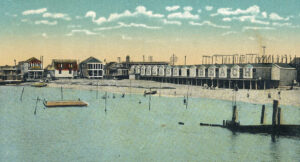
Edna recalled that “we took the train down and walked to the cottage. It was lined with burlap similar to a Merry-Go-Round with pictures painted on it and canvas on the floor and a round ring at the top.” Edna went on to talk about how the sawdust cane down in a hurricane or bad storm.
While her memories of her summers at Sandlass on Sandy Hook were always spectacular because of the natural beauty of the land and the friendship of the Sandlass family and all who stayed there, her memories of the former merry-go-round and ice house that were home for the summer weren’t as much fun, but nonetheless memorable and well worth the stay.
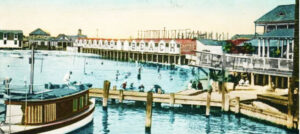
One of her interesting stories Edna told Susan was when Henry Sandlass was called by the military police to pick up Edna’s grandfather who had walked down the beach on Sandy Hook and without realizing it, passed on to military property without permission. Edan said her grandfather could not understand why he would not be allowed on the army property, since he was a member of Coxey’s Army! However, he left quietly and never returned without permission.
The Coxey’s Army Mr. Lusson referred to was the group of unemployed laborers who were suffering from what was, at that time in the late 19th century, the nation’s worst depression. A group of unemployed laborers like Mr. Lusson led by a congressman named Jacob Coxey, descended on Washington for a protest of anti-labor activities that were keeping them from gainful employment. A saying popular at the time, but rarely if ever heard now, was the term “enough food to feed Coxey’s army.”
The Robinson and Lusson cottage was on Dock street where there were 25 summer bungalows in the Highlands Beach Colony dating back to the 1890s when Mr. Sandlass allowed owners of the bungalows to build on resort land in a land/lease agreement each summer.
Dock Street happened by chance.
Each summer, the Shrewsbury River next to the resort would fill up with yachts, houseboats and steamboats bringing visitors to the Highland Beach resort on Sandy Hook. One of the visitors approached Mr. Sandlass to ask permission to pull his houseboat up on land at the end of the bathing pavilion. The owner agreed and a summer colony was born.
When the houseboat owner asked again the following year, the idea caught on and Sandlass had a new business idea to lease the land.
A dock at this location allowed resort visitors to disembark in the same area as the growing bungalow colony and it became known as Dock Street among the locals. Since the dock was a short distance from the entry to the Fort Hancock military reservation on Sandy Hook, it caused many cases of overflow recreation spilling onto government land before a boundary was established. Once the summer homes in the colony started to spring up in rapid succession and excursionists enjoying a day at the beach increased, the steamboats coming from North Jersey and New York City found difficulty docking at the site.
Eventually, a 75-foot extension was added to the original small dock to avoid the larger steamers encountering a sandbar nearby. At one time, a stationary trolley was also on Dock Street so visitors could purchase fares for the steamboats. Some 3,000 people a day during summers were coming on the steamboats from Northern New Jersey and New York to Sandy Hook.
Because the larger steamers needed the deeper water in the channel to dock, smaller local steamboats, which carried passengers from Red Bank and local docks along the river inland would dock at a shorter pier on the southern end of the river at the opposite end of the resort. One of the small steamers was a catamaran named Highland Beach, a popular favorite locally.
The large steamers or railroad brought the bungalow colony inhabitants and their extended families for 50 years until the automobiles became the most practical way to reach Sandy Hook and the Dock Street Bungalow Colony. Many of these family names from the original owners of the Dock Street colony are familiar names today in the local communities surrounding the Sandy Hook location where the colony once existed.
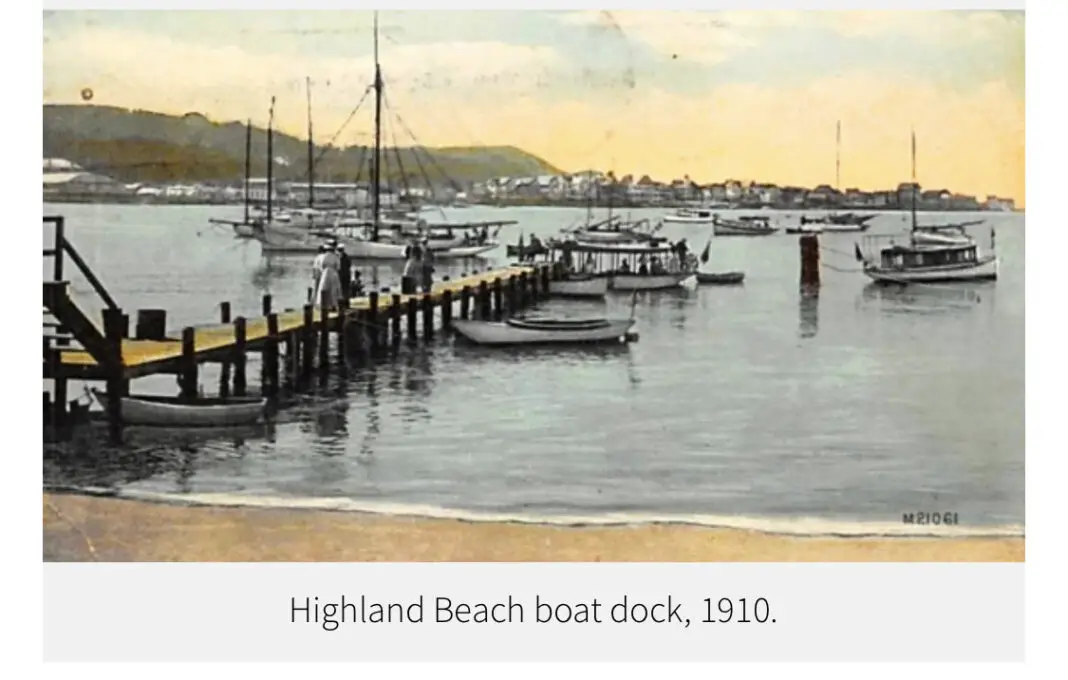

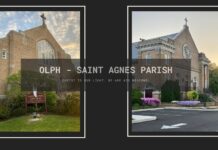

I am so glad that Susan has documented the “life” of Sandy Hook. My family and I belonged to Sandlass Beach Club. Gertrude Ederle gave us our swim medals in those days.
The fun also was swimming in the River at high tide and then going to the Ocean after for a swim. Fashion shows and dances were held in the Bamboo Room.
Wonderful times.
Comments are closed.